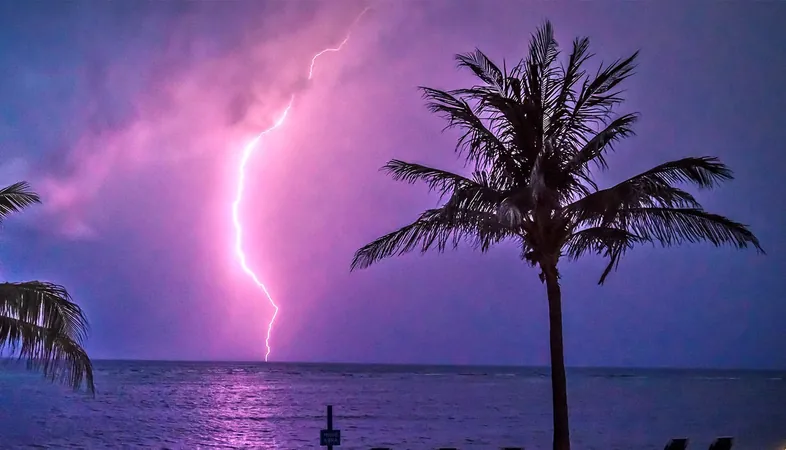
Shocking Discoveries: Thunderstorms Unleash Mysterious Gamma Radiation!
2024-10-04
Recent investigations leveraging a retrofitted U2 spy plane have unveiled astonishing levels and varieties of gamma radiation produced by large tropical thunderstorms. These revelations, stemming from two new papers published in Nature, challenge our longstanding understanding of these natural phenomena.
Back in the 1990s, NASA satellites designed to detect high-energy particles from supernovas unexpectedly identified gamma radiation bursts originating from Earth itself, particularly from thunderstorms. As Professor Steve Cummer from Duke University states, "There is way more going on in thunderstorms than we ever imagined."
While researchers quickly deduced that thunderstorms were responsible for this gamma radiation, the frequency of its occurrence remained shrouded in mystery due to the limitations of satellite technology at that time. They needed a more specialized platform to study thunderstorms up close, leading them to secure a NASA ER-2 High-Altitude Airborne Science Aircraft—an enhanced version of the classic U2 spy plane, capable of flying at altitudes over 20 kilometers (12.4 miles), well above the storm tops.
Upon conducting ten flights over tropical storms south of Florida, an astonishing 9 of these missions detected gamma radiation, suggesting that over half of all thunderstorms in tropical regions emit radioactive energy. As noted by Nikolai Østgaard from the University of Bergen, the ER-2 was ideally positioned to capture these gamma-ray emissions, revealing a dynamic mix of radiation types that resembled a boiling pot of water rather than the expected steady state.
The research team observed short but intense bursts of gamma radiation coinciding with lightning strikes, further cementing the connection between electrical activity and gamma emissions. However, they also identified new forms of gamma bursts that are not associated with lightning - one lasting less than a thousandth of a second and another comprising a series of rapid bursts. “These new discoveries could be linked to the mechanisms initiating lightning, which remain a tantalizing mystery,” Cummer explains.
Despite the eeriness of the findings, there is no need for alarm. Cummer reassures that, “the radiation levels are not dangerous unless you are extremely close to the source,” emphasizing that airplanes typically steer clear of the turbulent cores of active thunderstorms for safety.
This significant study not only enhances our understanding of thunderstorms but opens numerous avenues for future research into the complex interplay between electrical activity and radiation phenomena on our planet. With continued exploration, who knows what further secrets may be revealed about these awe-inspiring natural events?
Stay tuned, as the skies might just have more shocking surprises in store!

 Brasil (PT)
Brasil (PT)
 Canada (EN)
Canada (EN)
 Chile (ES)
Chile (ES)
 España (ES)
España (ES)
 France (FR)
France (FR)
 Hong Kong (EN)
Hong Kong (EN)
 Italia (IT)
Italia (IT)
 日本 (JA)
日本 (JA)
 Magyarország (HU)
Magyarország (HU)
 Norge (NO)
Norge (NO)
 Polska (PL)
Polska (PL)
 Schweiz (DE)
Schweiz (DE)
 Singapore (EN)
Singapore (EN)
 Sverige (SV)
Sverige (SV)
 Suomi (FI)
Suomi (FI)
 Türkiye (TR)
Türkiye (TR)